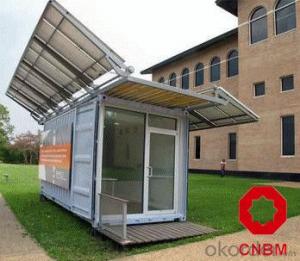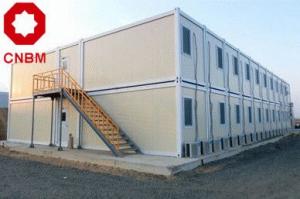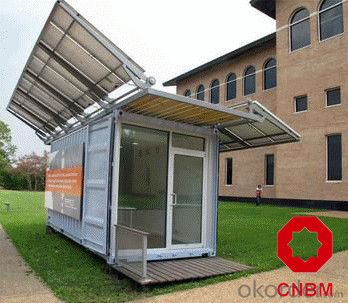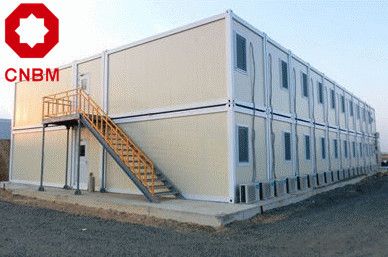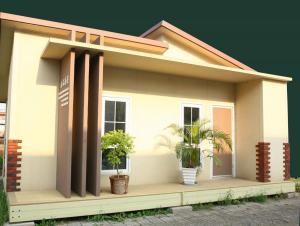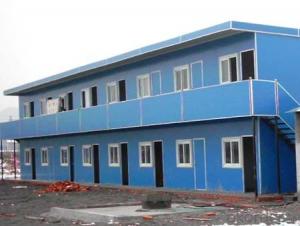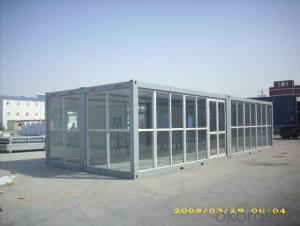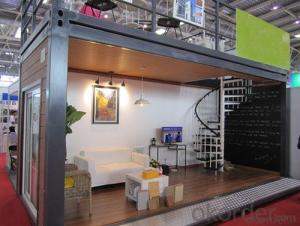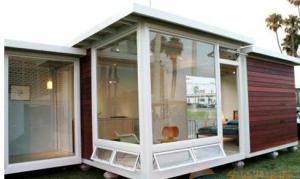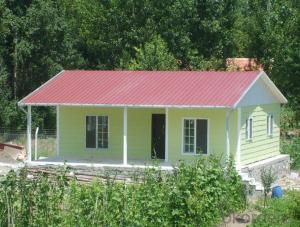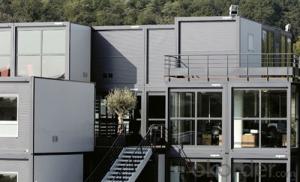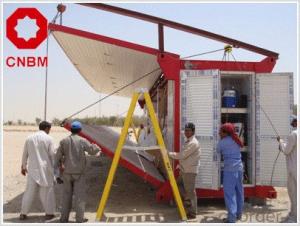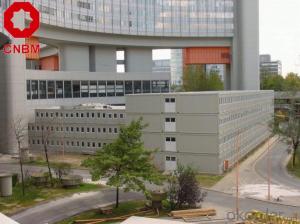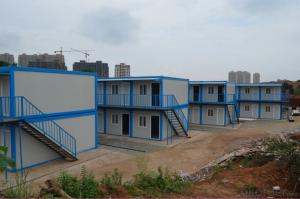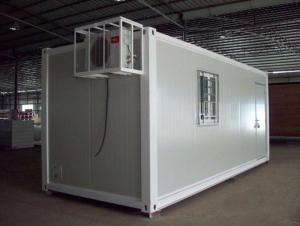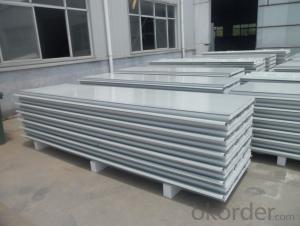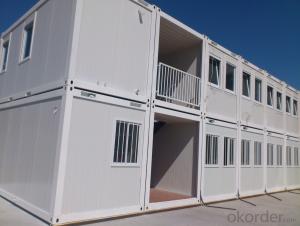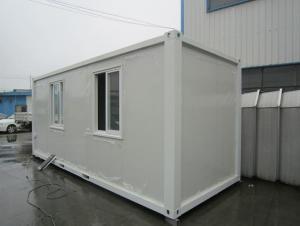Mobile Container House or Home Made in China
- Loading Port:
- Tianjin
- Payment Terms:
- TT OR LC
- Min Order Qty:
- 1 set
- Supply Capability:
- 1000 set/month
OKorder Service Pledge
OKorder Financial Service
You Might Also Like
Mobile Container House Made in China
Characteristic :
(1) With good appearance and can designed with customers' requirement.;
(2) Have strong earthquake resistance, high wind resistance , sound-insulated and anti-distortion ability;
(3) With good thermal insulation, and waterproof ability;
(4) Repetitive to use;
(5) Transportation convenient;
(6) Service life is long, can reach up to 15-20 years.
| The detailed information as follows: | |||
| Sort | Name | Specification | |
| Specification | 20’GP | Length:6055mm Width:2438m Height:2591mm Weight:2145KGS | |
| 40’GP | Length:12192mm Width:2438mm Height:2591mm Weight:3650KGS | ||
| 40’HQ | Length:12192mm Width2438mm Height:2896mm Weight:3800KGS | ||
| Standard accessory | Wall | Material: steel | |
| Roof | Material: steel | ||
| Door | Aluminium alloy, wood ,steel or customers' requirement | ||
| Window | Aluminium alloy, wood or customers’ requirement | ||
| Decorative floor | PVC or laminated flooring in living area and aluminium panel in bathroom and kitchen or customers’ requirement | ||
| Water supply and Drainage system | Provided plan, design and construction or customers’ requirement | ||
| Electric system | Provided plan, design and construction or customers’ requirement | ||
| Technical parameter | Resistant temperature | -50°C to 70°C | |
| Fire proof | B2 grade | ||
| Earthquake resistance | 8Grade | ||
| Wind resistant | 120km/h | ||
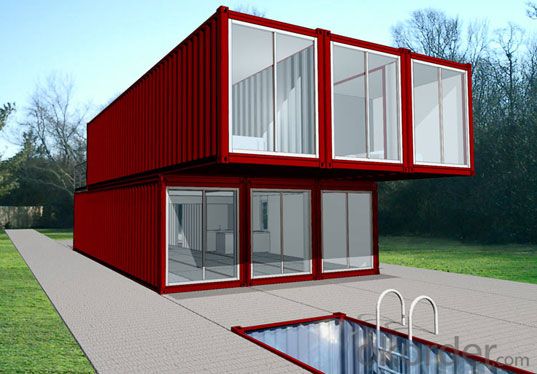
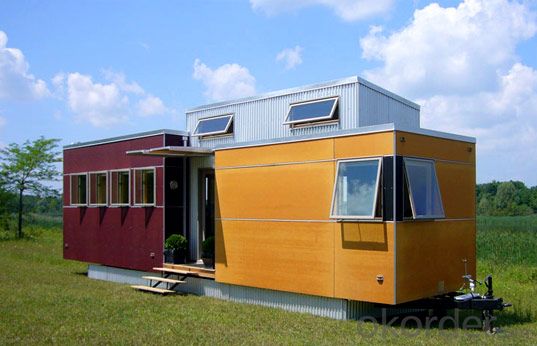
Main material a. light steel as steel structure, including C section steel, V section steel, square steel tube
b. Various sandwich panels for wall and roof, the insulation can be EPS, rock wool, fiber glass wool
Window Aluminum alloy window with roller shutter, plastic-steel window
Door EPS/rock wool/fiber glass wool sandwich panel door, steel/plastic-steel/aluminum alloy door
Optional items We can supply you bathroom, kitchen, electricity system, home appliance, furniture and other components as per your request
Information For Customers:
If the customer can provide the following information it will be very helpful:
1.The dimension of the house:20',40 or 40'HQ container size
2.The quantity you need
3.The function of the house, or if need interior equipment
4.The class of the house: the high, the middle or the low class
The container house are constructed from ISO standard shipping containers,which is ideal choice for people who wants to make full use of indoor space, environment friendly,recycled.
- Q: Are container houses suitable for all climates?
- Container houses can be suitable for various climates, but their suitability may depend on certain factors. In moderate and temperate climates, container houses can be an excellent choice. The steel structure of shipping containers provides durability and strength, making them resistant to the elements. With proper insulation and ventilation, container houses can effectively regulate temperatures, keeping them cool in summer and warm in winter. However, in extreme climates, such as very hot or very cold regions, container houses may require additional modifications to ensure comfort and energy efficiency. In extremely hot climates, proper insulation, reflective coatings, and shading elements can help reduce heat gain and maintain a comfortable indoor temperature. In extremely cold climates, additional insulation, double-glazed windows, and efficient heating systems are necessary to prevent heat loss and maintain warmth. Furthermore, container houses located in coastal areas should consider the effects of saltwater corrosion. Coastal regions are more prone to high humidity, saltwater spray, and corrosive winds, which can accelerate the deterioration of the steel structure. Extra precautions, such as anti-corrosion coatings and regular maintenance, should be taken to ensure the longevity of the container house in these climates. Overall, while container houses can be suitable for various climates, it is crucial to consider the specific climate conditions and make necessary modifications to enhance their suitability. Consulting with professionals who have experience in container house construction and climate-specific design is highly recommended to ensure the best outcome.
- Q: Can container houses withstand extreme weather conditions?
- Yes, container houses are designed to withstand extreme weather conditions. These houses are typically made from steel shipping containers, which are built to be extremely durable and resistant to harsh environments. They are constructed to withstand heavy loads, such as being stacked on top of each other during transport, and are also designed to resist the impacts of rough seas and strong winds. Container houses can be modified to enhance their ability to withstand extreme weather conditions. For instance, insulation can be added to regulate temperature and prevent heat loss during cold winters or excessive heat in hot summers. Additionally, reinforced windows and doors can be installed to provide extra protection against strong winds and storms. Furthermore, container houses can be designed to be resistant to flooding by elevating them on stilts or using a raised foundation. This helps to minimize the risk of water damage during heavy rainfall or flooding events. Overall, while no structure is completely impervious to extreme weather, container houses are specifically engineered to be robust and durable, making them well-suited to withstand a wide range of weather conditions.
- Q: Can container houses be designed to have large windows?
- Yes, container houses can be designed to have large windows. The design and construction of container houses allow for flexibility in window placement and size. With proper structural modifications, containers can be transformed into modern and spacious homes with large windows, providing ample natural light and a sense of openness.
- Q: Can container houses be built with a contemporary gym or fitness area?
- Yes, container houses can be built with a contemporary gym or fitness area. With proper planning and design, containers can be transformed into functional and modern spaces that can accommodate various purposes, including fitness areas. By utilizing the available space efficiently and incorporating necessary amenities and equipment, container houses can be customized to include a gym or fitness area that meets contemporary standards.
- Q: Can container houses be designed with renewable energy systems?
- Yes, container houses can definitely be designed with renewable energy systems. In fact, container houses are highly adaptable and can easily incorporate various renewable energy sources such as solar panels, wind turbines, or geothermal heating systems. These energy systems can provide sustainable and efficient power for the container house, making it a more environmentally friendly and cost-effective living solution.
- Q: Are container houses customizable in terms of layout?
- Yes, container houses are highly customizable in terms of layout. One of the key advantages of using shipping containers as a building material is their versatility and flexibility. These containers can be easily modified and rearranged to create different layouts, allowing for endless design possibilities. The walls of container houses can be removed or repositioned to create larger open spaces or smaller rooms, depending on the desired layout. Additionally, windows and doors can be added or relocated to maximize natural light and optimize the flow of the space. With the help of skilled architects and designers, container houses can be customized to meet specific needs and preferences, making them a popular choice for those seeking a unique and tailored living space.
- Q: Can container houses be designed to have a home gym or fitness area?
- Yes, container houses can certainly be designed to include a home gym or fitness area. With proper planning and customization, the interior layout of a container house can be optimized to accommodate fitness equipment, such as exercise machines, weights, or yoga mats. Additionally, the design can incorporate features like large windows for natural light, proper ventilation, and soundproofing to create an ideal space for workouts.
- Q: Are container houses suitable for senior living communities?
- Yes, container houses can be suitable for senior living communities. These houses are often designed to be accessible and can be modified to meet the specific needs of seniors, such as incorporating ramps, grab bars, and wider doorways. Container houses are also cost-effective, energy-efficient, and can be easily customized to create comfortable and safe living spaces for seniors.
- Q: What sizes do container houses come in?
- Container houses come in a variety of sizes, ranging from small units made from a single container to larger homes created by joining multiple containers together.
- Q: Are container houses safe during earthquakes?
- Yes, container houses can be safe during earthquakes if they are properly designed and constructed with seismic-resistant features. These features include reinforced foundations, flexible connections, and bracing systems that can absorb and dissipate seismic energy. Additionally, the use of appropriate materials and adherence to building codes and regulations can enhance the safety of container houses during earthquakes.
Send your message to us
Mobile Container House or Home Made in China
- Loading Port:
- Tianjin
- Payment Terms:
- TT OR LC
- Min Order Qty:
- 1 set
- Supply Capability:
- 1000 set/month
OKorder Service Pledge
OKorder Financial Service
Similar products
Hot products
Hot Searches
Related keywords
